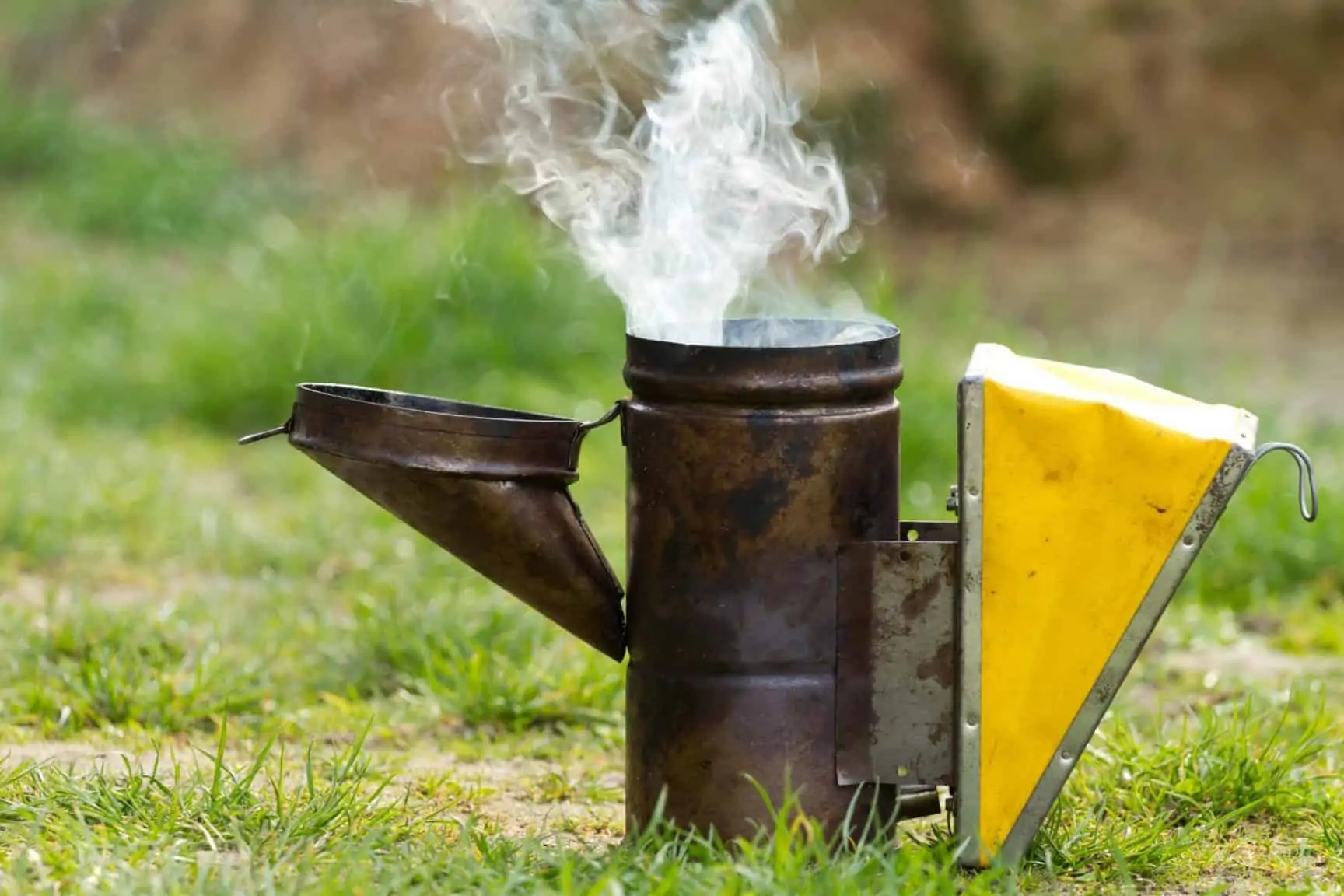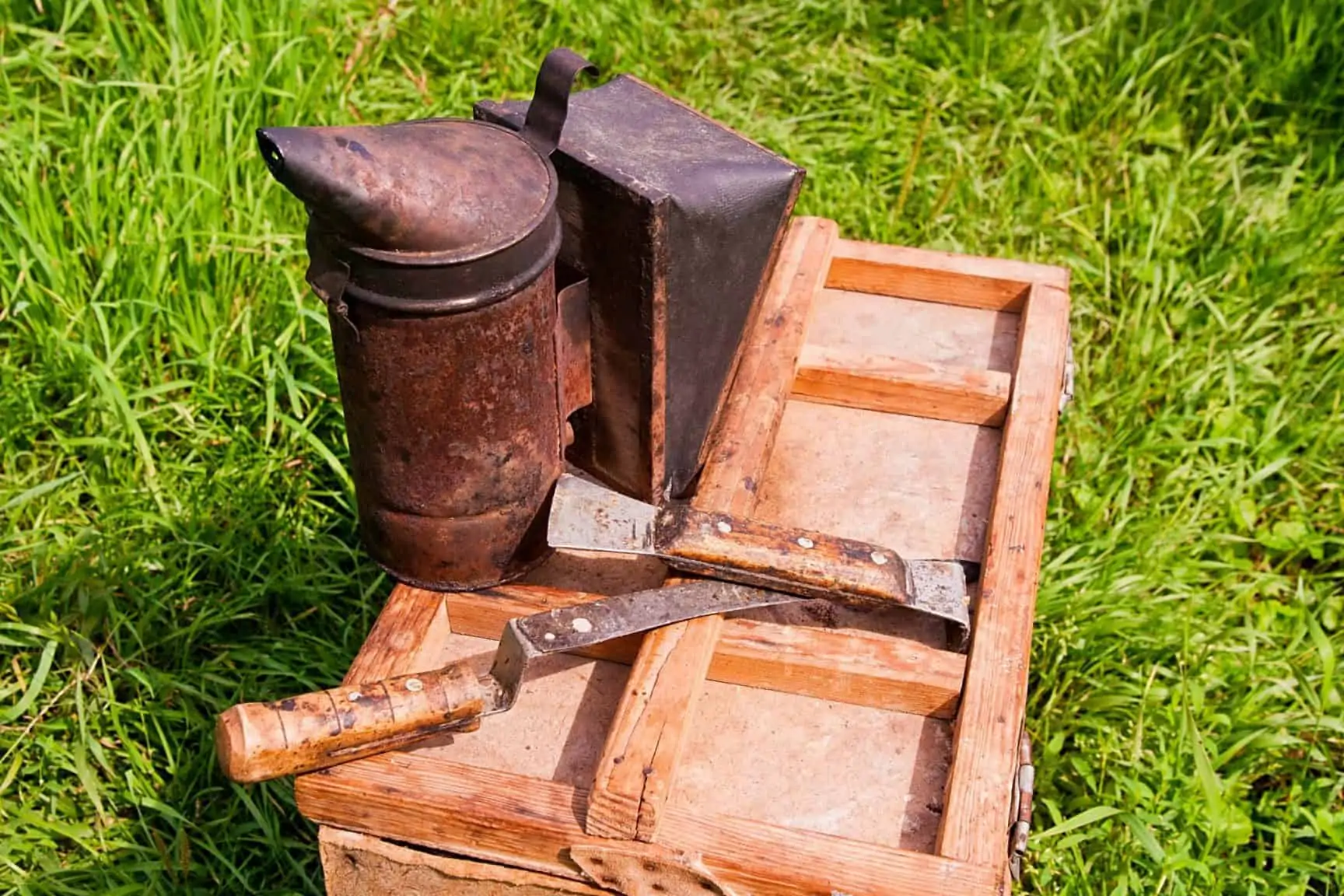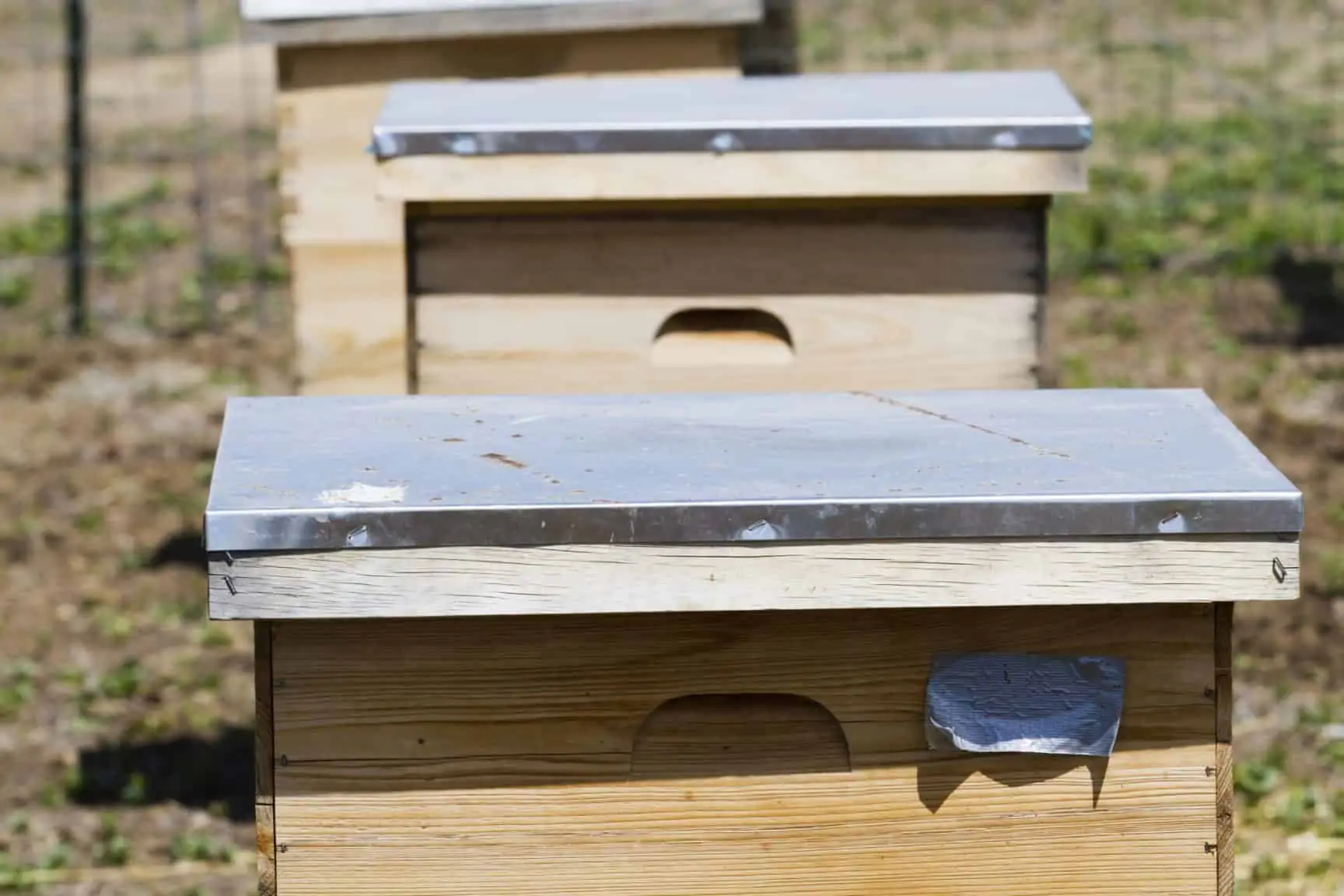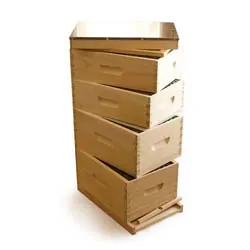Unlike most hobbies, beekeeping cannot be easily begun on a whim. It is a serious endeavor that takes research, good equipment, discipline and patience to handle a hive properly. Serious beekeepers invest in the proper beekeeping equipment.
Having an understanding of the equipment you need – for your circumstances, environment and ambitions – is an important step before you make that first purchase. Beyond the hive itself, here is is a list of essential and recommended equipment to allow a new hive to thrive. We’ve divided this into equipment you will need to protect yourself and other tools important to getting the job done.
Protection
Protection from bees is an essential component to beekeeping. However, individual beekeepers have different needs and preferences when it comes to how they protect themselves and the degree to which avoiding stings is important to them.
Some beekeepers will use a complete suit with all of the trimmings, while others opt for only a veiled helmet. It is very rare for a beekeeper not to use any protective equipment at all, is not recommended no matter how brave or invincible you feel. As a beginner beekeeper, though, we’re thinking you already agree with us on that!
Bee Suits
Bee suits can be found in a surprisingly wide variety of styles and options. Novice beekeepers should consider a full bee suit, covering the body from head to toe and sting proof. As you become more accustomed to the bees (and their stings) and them to you, you may wish to explore your options a bit more.
There are bee suits that come with an attached veil and others with a detachable hood and veil. You can also buy a bee suit that consists only of the top half. These suits are less cumbersome and available in a jacket or smock styles.
There is a certain subjectivity to choosing the right bee suit, so it is best to shop around and conduct research on brands before making a final decision.
Gloves
The use of gloves is a somewhat contentious subject among beekeepers. Some beekeepers believe gloves should always be used, while others believe performing beekeeping tasks barehanded is the best way to tend a hive.
Not using gloves puts the keeper at higher risk of being stung, but many gloves made for beekeeping are ill fitting. The best course of action for novice beekeepers, to wear gloves at all times for protection. Leather gloves, dishwashing gloves, and latex gloves are all options, but the thicker the gloves, the greater the protection.
Veils
Even the most hardcore beekeepers will concede to wearing a veil to protect their face. The type of veil depends entirely on the preference of the beekeeper. Some veils come attached to a bee suit and others can be zipped onto a suit. There are veils that come attached to hoods resembling fencing hoods, or helmets of varying shapes and sizes. Many veils simply drape over the face and gather around the shoulders and chest, but there are some that have bands that form a sort of frame for the veil and give it a shape.
Ankle Protection
There are several ways to protect the ankles, feet, and legs from the bees as you work the hive. High ankle hiking boots or rubber boots can be worn with long pants or a bee suit, elastic ankle protectors can be worn to keep pant legs closed, or duct tape can be used the same way as a cheaper option. Some keepers feel this is unnecessary, but many more will tell you it is worth avoiding an errant bee in your britches.
Tools

Specially designed tools are needed for successful beekeeping. Grabbing a bunch of stuff from a kitchen drawer or toolbox won’t allow you to perform the tasks necessary for a hive to be properly maintained. There are beekeeping starter kits for a relatively low price, but a serious beginner would do well to buy equipment individually to ensure the quality of the tools and gear. Keep in mind, the equipment is meant to keep you safe and the bees healthy, and by cutting corners you’re not doing yourself or your hive any favors in the long run.
Smokers and Fuel
A smoker is needed to help keep the bees calm, so the hive can be worked and the keeper kept as safe as possible. Most smokers have essentially the same design, but they vary depending on the bells and whistles that come with it. A basic smoker that functions well is all the is needed, so there is no need to waste money on a fancy smoker. Fuel for smokers can range from dried pine needles to newspaper or cardboard. It may take a bit of experimentation to determine what fuel works best for your hive.
Beeswax Collector
A beeswax collector is a receptacle to collect discarded beeswax to save for another purpose. The collector can be a bucket, box, can, or jar that will hold the wax scrapings as they are removed from the hive. Leftover wax can be used to make beeswax candles or sold to a company that manufactures beeswax-based products.
Cappings Scratcher
A cappings scratcher is what is used to remove the wax caps from the honeycombs to extract the honey from the frames. Special knives are often used instead, because they are simpler to use, but a scratcher is often still utilized for stubborn caps that need a bit more force to dislodge them.
Uncapping Knife
There are many types of uncapping knives including:
•Electric powered
•Steam operated
•Hot
•Cold
•Serrated
The knife you choose depends on what you prefer. Electric knives tend to be heavy, so people with delicate hands steer away from them. It will probably take time to master the knife you choose, so do your research before purchasing one.
Hive Tool

A hive tool is basically a beekeeping multi-tool. It is used to pry, scrape, lift, loosen, and removing frames. The tool has a simple design and doesn’t look like it’s as a essential as it really is, but looks can be deceiving. This tool is a must have and will save the day more than once.
Frame Perch
A frame perch is used to hang frames as you remove and work the frames. Instead of propping the frames against something, they can be kept off of the ground and out from underfoot. Frame perches can be found made from wood or metal, and can be easily and cheaply made at home.
Bee Brush
A bee brush is used to remove bees from frames and other parts of hive as well as clothing. The brush is designed to be gentle and not injure the bees while still be effective in dislodging them from the area you wish them gone.

Outer Cover
An outer hive cover protects the hive from poor weather conditions. The cover is metal and telescoping, meaning it overhangs the edges of the hive for added protection. This is essential for beekeepers that live in regions with volatile weather conditions.
